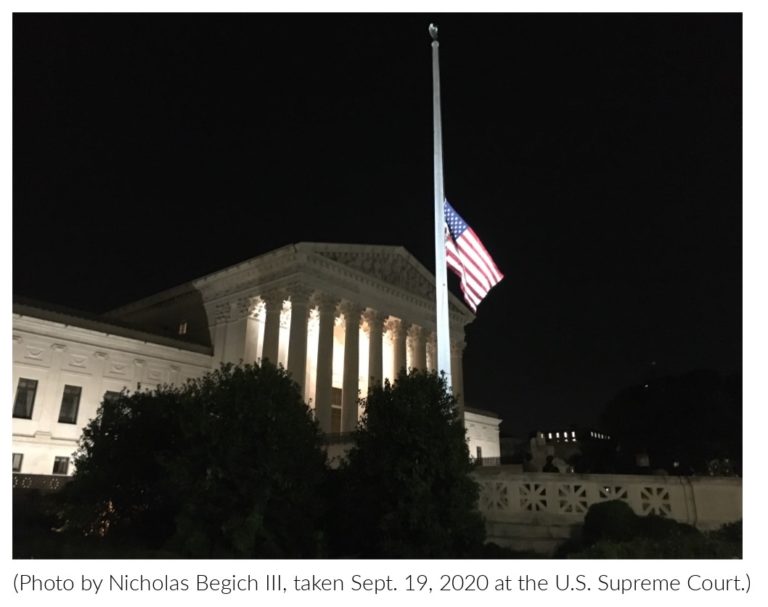By MICHAEL TAVOLIERO
NLRB v Jones & Laughlin Steel Corp (1937) established pristine and fabricated legal doctrines through case law. It marked one of the early instances where judicial pragmatism played a role in interpreting the U.S. Constitution as a “living” document.
This approach considers social and historical contexts rather than relying solely on strict textual reading of the Constitution.
Moreover, the case law-established doctrine of labor rights, particularly the principle of collective bargaining, is grounded in the broader framework of workers’ rights, now firmly established in U.S. labor law through the National Labor Relations Act of 1935.
In NLRB, the Court affirmed the constitutionality of the National Labor Relations Act, emphasizing that labor relations and the right to organize are essential for preserving industrial peace and preventing disruptions to interstate commerce.
Chief Justice Charles Evans Hughes, who wrote the opinion for NLRB, four years previously wrote the majority opinions which declared unconstitutional three center pieces of FDR’s legislative hegemony.
Reacting to the defeat of his New Deal legislation by the court, President Franklin D. Roosevelt resurrected a plan from the Woodrow Wilson administration to reorganize the court, which although the plan was never adopted by Congress impacted the political standing of the court.
In April 1937, the U.S. Supreme Court upheld the National Labor Relations Act by a 5-4 vote, which signaled a politically motivated change in the court’s jurisprudence. Chief Justice Charles Evan Hughes, a progressive Republican, was the deciding vote.
“A switch in time saves nine” was the media’s slogan regarding the change in the Court’s jurisprudence in the wake of Roosevelt’s court- packing furor.
Interestingly, the Fifth Circuit Court of Appeals opinion, which ruled against the Roosevelt Administration and was appealed in NLRB, clearly stated, “The Constitution does not vest in the Federal Government the power to regulate the relation as such of employer and employee in production or manufacture.”
In the U.S. Supreme Court’s NLRB dissent by Associate Justice James Clark McReynolds and joined by the other members of the Four Horsemen — Associate Justice Willis Van Devanter, Associate Justice George Sutherland, Associate Justice Pierce Butler, the dissenters stated: “It puts into the hands of a Board power of control over purely local industry beyond anything heretofore deemed permissible.”
During the Great Depression this changed the court’s judicial philosophy from the need of productive economic issues to the maelstrom of individual rights. The irony was explicit.
Effectively, the court’s upholding of the National Labor Relations Act aborted what remained of states sovereignty in favor of federal collective planning.
It took the doctrine of federalism and perverted it to tyranny.
Before NLRB, federalism yielded a splendid differentiation of sovereignty and authority between the states and the federal government. Simply, the federal government had the authority to regulate interstate commerce, and the states had authority to regulate intrastate commerce.
Hamilton in Federalist Papers No. 11 addressed the necessity of a unified regulation of trade among states under the federal government.
Madison wrote in Federalist No. 42 the need for a strong federal authority over interstate commerce to prevent states from imposing duties and tariffs on goods passing through their jurisdictions, which would hinder trade and economic unity. These duties would ultimately burden the producers of those goods and the consumers purchasing them.
The Constitution’s Commerce Clause was designed to address these economic concerns by granting Congress the power to regulate interstate commerce.
While social interactions and dealings between people are an essential part of society, the constitutional discussion and the intent behind the Commerce Clause were more centered on regulating economic activity to create a unified and efficient national market. The broader social interactions were not a focus, although they were implicitly acknowledged as part of the overall context in which commerce occurred to enable local productivity.
Intrastate commerce pronounced this as an essential local part of commerce which was guaranteed by the 10th Amendment.
Before 1937, intrastate commerce was largely regarded as the responsibility of the states. The Founders saw commerce as more than just large-scale buying and selling. It was a principle that safeguarded state sovereignty and autonomy within their own borders.
This autonomy enabled states to drive socioeconomic productivity and nurture interpersonal relationships within their communities. For the Founders, intrastate commerce was not merely about economic transactions but was deeply rooted in the social interactions among people at the local level, which, in turn, generated economic benefits.
This multiplicity of interactions made up the strength of the states and ultimately the federal government.
The original text of the Constitution and the Bill of Rights was designed to limit the federal government’s powers, reserving most powers to the states and the people. The expansive interpretation of the Commerce Clause that emerged later in NLRB was not envisioned by the Founders.
Specifically, in cases like NLRB v. Jones & Laughlin Steel Corp., the Court interpreted the Commerce Clause in a broader manner, thereby expanding congressional power over intrastate commerce. This interpretation was based on the Court’s view of the evolving needs of the nation and the economy, rather than a strict adherence to the original intent of the Founders. The decision reflected the Court’s judgment that federal regulation was necessary to manage the complexities of a modern, interconnected economy.
Supporters of the NLRB argue that the Constitution, as a living document, is intended to adapt to changing circumstances. They believe that the economic realities of the modern age necessitate a more flexible interpretation of the Commerce Clause to effectively address the complexities of an interconnected economy.
One can argue the merits and defects of these extra-constitutional doctrines and principles, but the real question for me is do they belong in American federal jurisprudence? Would these better serve the public in a state’s system?
NLRB v Jones & Laughlin Steep Corp amended the U.S. Constitution without ratification.
Michael Tavoliero is a senior contributor at Must Read Alaska.









